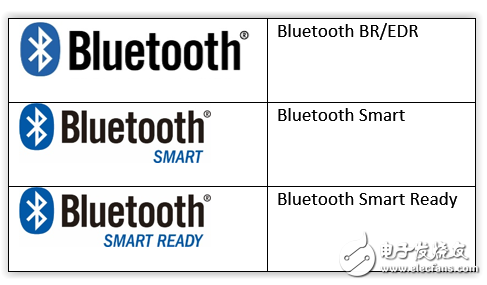

Android BLE的一些基础知识及相关操作流程
人工智能
描述
前言:
本文主要描述Android BLE的一些基础知识及相关操作流程,不牵扯具体的业务实现,其中提供了针对广播包及响应包的解析思路,希望对正在或即将面临Android BLE开发的伙伴们有所引导。
注:其中的单模、双模、BR、BT、BLE、蓝牙3.0、蓝牙4.0等概念混在一起可能比较难理解,不知下文描述是否清晰,如果有不理解的地方,欢迎留言交流!
一、相关介绍 1、概述
蓝牙无线技术是一种全球通用的短距离无线技术,通过蓝牙技术能够实现多种电子设备间的相互连接,特别是在小型无线电、耗电量低、成本低、安全性、稳定性、易用性以及特别的联网能力等固有的优势上,蓝牙无线技术发展迅速。
2、分类
蓝牙分为三种:Bluetooth Smart Ready、Bluetooth Smart(Smart是低功耗蓝牙的标识)、以及标准 Bluetooth。根据 Bluetooth SIG的说法,这样是为了要分辨装置间的相容性以及标识各版本的传输频率。基本上来说,Bluetooth Smart Ready适用于任何双模蓝牙4.0的电子产品,而Bluetooth Smart是应用在心率监视器或计步器等使用扭扣式电池并传输单一的装置。Bluetooth Smart Ready的相容性最高,可与Bluetooth Smart及标准蓝牙相通。标准蓝牙则无法与Bluetooth Smart相通。

3、BLE介绍
BLE是Bluetooth Low Energy的缩写,又叫蓝牙4.0,区别于蓝牙3.0和之前的技术。BLE前身是NOKIA开发的Wibree技术,主要用于实现移动智能终端与周边配件之间的持续连接,是功耗极低的短距离无线通信技术,并且有效传输距离被提升到了100米以上,同时只需要一颗纽扣电池就可以工作数年之久。BLE是在蓝牙技术的基础上发展起来的,既同于蓝牙,又区别于传统蓝牙。BLE设备分单模和双模两种,双模简称BR,商标为Bluetooth Smart Ready,单模简称BLE或者LE,商标为Bluetooth Smart。Android是在4.3后才支持BLE,这说明不是所有蓝牙手机都支持BLE,而且支持BLE的蓝牙手机一般是双模的。双模兼容传统蓝牙,可以和传统蓝牙通信,也可以和BLE通信,常用在手机上,android4.3和IOS4.0之后版本都支持BR,也就是双模设备。单模只能和BR和单模的设备通信,不能和传统蓝牙通信,由于功耗低,待机长,所以常用在手环的智能设备上。
二、基本概念 1、Generic Access Profile(GAP)
用来控制设备连接和广播,GAP使你的设备被其他设备可见,并决定了你的设备是否可以或者怎样与合同设备进行交互。
2、Generic Attribute Profile(GATT)通过BLE连接,读写属性类数据的Profile通用规范,现在所有的BLE应用Profile都是基于GATT的。
3、Attribute Protocol (ATT)GATT是基于ATTProtocol的,ATT针对BLE设备做了专门的优化,具体就是在传输过程中使用尽量少的数据,每个属性都有一个唯一的UUID,属性将以characteristics and services的形式传输。
4、CharacteristicCharacteristic可以理解为一个数据类型,它包括一个value和0至多个对次value的描述(Descriptor)。
5、Descriptor对Characteristic的描述,例如范围、计量单位等。
6、ServiceCharacteristic的集合。例如一个service叫做“Heart Rate Monitor”,它可能包含多个Characteristics,其中可能包含一个叫做“heart ratemeasurement”的Characteristic。
7、UUID唯一标示符,每个Service,Characteristic,Descriptor,都是由一个UUID定义。
三、Android BLE API 1、BluetoothGatt
继承BluetoothProfile,通过BluetoothGatt可以连接设备(connect),发现服务(discoverServices),并把相应地属性返回到BluetoothGattCallback,可以看成蓝牙设备从连接到断开的生命周期。
2、BluetoothGattCharacteristic相当于一个数据类型,可以看成一个特征或能力,它包括一个value和0~n个value的描述(BluetoothGattDescriptor)。
3、BluetoothGattDescriptor描述符,对Characteristic的描述,包括范围、计量单位等。
4、BluetoothGattService服务,Characteristic的集合。
5、BluetoothProfile一个通用的规范,按照这个规范来收发数据。
6、BluetoothManager
通过BluetoothManager来获取BluetoothAdapter。
BluetoothManager bluetoothManager = (BluetoothManager) getSystemService(Context.BLUETOOTH_SERVICE);
代表了移动设备的本地的蓝牙适配器, 通过该蓝牙适配器可以对蓝牙进行基本操作,一个Android系统只有一个BluetoothAdapter,通过BluetoothManager获取。
BluetoothAdapter bluetoothAdapter = bluetoothManager.getAdapter();
扫描后发现可连接的设备,获取已经连接的设备。
BluetoothDevice bluetoothDevice = bluetoothAdapter.getRemoteDevice(address);
已经连接上设备,对设备的某些操作后返回的结果。
1 2 3 4 BluetoothGattCallback bluetoothGattCallback = new BluetoothGattCallback(){ //实现回调方法,根据业务做相应处理 }; BluetoothGatt bluetoothGatt = bluetoothDevice.connectGatt(this, false, bluetoothGattCallback);三、操作流程 1、蓝牙开启
在使用蓝牙BLE之前,需要确认Android设备是否支持BLE feature(required为false时),另外要需要确认蓝牙是否打开。如果发现不支持BLE,则不能使用BLE相关的功能;如果支持BLE,但是蓝牙没打开,则需要打开蓝牙。代码示例如下:
1 2 3 4 5 6 7 8 9 10 11 12 13 14 15 16 17 18 19 20 21 22 23 24 25 26 27 28 29 30 31 32 33 34 35 36 37 38 39 40 41 42 43 44 //是否支持蓝牙模块 @TargetApi(18) public static boolean isSupportBle(Context context) { if(context != null && context.getPackageManager().hasSystemFeature("android.hardware.bluetooth_le")) { BluetoothManager manager = (BluetoothManager)context.getSystemService("bluetooth"); return manager.getAdapter() != null; } else { return false; } } //是否开启蓝牙 @TargetApi(18) public static boolean isBleEnable(Context context) { if(!isSupportBle(context)) { return false; } else { BluetoothManager manager = (BluetoothManager)context.getSystemService("bluetooth"); return manager.getAdapter().isEnabled(); } } //开启蓝牙 public static void enableBle(Activity act, int requestCode) { Intent mIntent = new Intent("android.bluetooth.adapter.action.REQUEST_ENABLE"); act.startActivityForResult(mIntent, requestCode); } //蓝牙开启过程 if(isSupportBle(mContext)){ //支持蓝牙模块 if(!isBleEnable(mContext)){ //没开启蓝牙则开启 enableBle(mSelfActivity, 1); } } else{ //不支持蓝牙模块处理 } //蓝牙开启回调 @Override protected void onActivityResult(int requestCode, int resultCode, Intent data) { //判断requestCode是否为开启蓝牙时传进去的值,再做相应处理 if(requestCode == 1){ //蓝牙开启成功后的处理 } super.onActivityResult(requestCode, resultCode, data); }2、设备搜索
BluetoothAdapter.startDiscovery在大多数手机上是可以同时发现经典蓝牙和Ble的,但是startDiscovery的回调无法返回Ble的广播,所以无法通过广播识别设备,且startDiscovery扫描Ble的效率比StartLeScan低很多。所以在实际应用中,还是StartDiscovery和StartLeScan分开扫,前者扫传统蓝牙,后者扫低功耗蓝牙。
由于搜索需要尽量减少功耗,因此在实际使用时需要注意:当找到对应的设备后,立即停止扫描;不要循环搜索设备,为每次搜索设置适合的时间限制,避免设备不在可用范围的时候持续不停扫描,消耗电量。
通过调用BluetoothAdapter的 startLeScan() 搜索BLE设备。调用此方法时需要传入 BluetoothAdapter.LeScanCallback 参数。具体代码示例如下:
1 2 3 4 5 6 7 8 BluetoothManager bluetoothManager = (BluetoothManager) getSystemService(Context.BLUETOOTH_SERVICE); BluetoothAdapter bluetoothAdapter = bluetoothManager.getAdapter(); bluetoothAdapter.startLeScan(new BluetoothAdapter.LeScanCallback() { @Override public void onLeScan(BluetoothDevice device, int rssi, byte[] scanRecord) { //对扫描到的设备进行处理,可以依据BluetoothDevice中的信息、信号强度rssi以及广播包和响应包组成的scanRecord字节数组进行分析 } });3、设备通信
两个设备通过BLE通信,首先需要建立GATT连接,这里我们讲的是Android设备作为client端,连接GATT Server。连接GATT Server,需要调用BluetoothDevice的connectGatt()方法,此函数带三个参数:Context、autoConnect(boolean)和 BluetoothGattCallback 对象。调用后返回BluetoothGatt对象,它是GATT profile的封装,通过这个对象,我们就能进行GATT Client端的相关操作。如断开连接bluetoothGatt.disconnect(),发现服务bluetoothGatt.discoverServices()等等。示例代码如下:
1 2 3 4 5 6 7 8 9 10 11 12 13 14 15 16 17 18 19 20 21 22 23 24 25 26 27 28 29 30 31 32 33 34 35 36 37 38 39 40 41 42 43 44 45 46 47 48 49 50 51 52 53 54 55 56 57 58 59 60 61 62 63 64 65 66 67 68 69 70 71 72 73 74 75 76 77 78 79 80 81 82 BluetoothDevice bluetoothDevice = bluetoothAdapter.getRemoteDevice(address); BluetoothGattCallback bluetoothGattCallback = new BluetoothGattCallback(){ @Override public void onConnectionStateChange(BluetoothGatt gatt, int status, int newState) { super.onConnectionStateChange(gatt, status, newState); } @Override public void onServicesDiscovered(BluetoothGatt gatt, int status) { super.onServicesDiscovered(gatt, status); } @Override public void onCharacteristicRead(BluetoothGatt gatt, BluetoothGattCharacteristic characteristic, int status) { super.onCharacteristicRead(gatt, characteristic, status); } @Override public void onCharacteristicWrite(BluetoothGatt gatt, BluetoothGattCharacteristic characteristic, int status) { super.onCharacteristicWrite(gatt, characteristic, status); } @Override public void onCharacteristicChanged(BluetoothGatt gatt, BluetoothGattCharacteristic characteristic) { super.onCharacteristicChanged(gatt, characteristic); } @Override public void onDescriptorRead(BluetoothGatt gatt, BluetoothGattDescriptor descriptor, int status) { super.onDescriptorRead(gatt, descriptor, status); } @Override public void onDescriptorWrite(BluetoothGatt gatt, BluetoothGattDescriptor descriptor, int status) { super.onDescriptorWrite(gatt, descriptor, status); } @Override public void onReliableWriteCompleted(BluetoothGatt gatt, int status) { super.onReliableWriteCompleted(gatt, status); } @Override public void onReadRemoteRssi(BluetoothGatt gatt, int rssi, int status) { super.onReadRemoteRssi(gatt, rssi, status); } @Override public void onMtuChanged(BluetoothGatt gatt, int mtu, int status) { super.onMtuChanged(gatt, mtu, status); } }; BluetoothGatt bluetoothGatt = bluetoothDevice.connectGatt(this, false, bluetoothGattCallback); //以下为获得Gatt后的相关操作对应的响应方法 //notification to onCharacteristicChanged; bluetoothGatt.setCharacteristicNotification(characteristic, true); //readCharacteristic to onCharacteristicRead; bluetoothGatt.readCharacteristic(characteristic); //writeCharacteristic to onCharacteristicWrite; bluetoothGatt.wirteCharacteristic(mCurrentcharacteristic); //connect and disconnect to onConnectionStateChange; bluetoothGatt.connect(); bluetoothGatt.disconnect(); //readDescriptor to onDescriptorRead; bluetoothGatt.readDescriptor(descriptor); //writeDescriptor to onDescriptorWrite; bluetoothGatt.writeDescriptor(descriptor); //readRemoteRssi to onReadRemoteRssi; bluetoothGatt.readRemoteRssi(); //executeReliableWrite to onReliableWriteCompleted; bluetoothGatt.executeReliableWrite(); //discoverServices to onServicesDiscovered; bluetoothGatt.discoverServices();四、数据解析
2、TYPE = 0x02:非完整的16 bit UUID列表
3、TYPE = 0x03:完整的16 bit UUID列表
4、TYPE = 0x04:非完整的32 bit UUID列表
5、TYPE = 0x05:完整的32 bit UUID列表
6、TYPE = 0x06:非完整的128 bit UUID列表
7、TYPE = 0x07:完整的128 bit UUID列表
8、TYPE = 0x08:设备简称
9、TYPE = 0x09:设备全名
10、TYPE = 0x0A:表示设备发送广播包的信号强度
11、TYPE = 0x0D:设备类别
12、TYPE = 0x0E:设备配对的Hash值
13、TYPE = 0x0F:设备配对的随机值
14、TYPE = 0x10:TK安全管理(Security Manager TK Value)
15、TYPE = 0x11:带外安全管理(Security Manager Out of Band),各bit定义如下:
16、TYPE = 0x12:外设(Slave)连接间隔范围,数据中定义了Slave最大和最小连接间隔,数据包含4个字节:前两字节定义最小连接间隔,取值范围:0x0006 ~ 0x0C80,而0xFFFF表示未定义;后两字节,定义最大连接间隔,取值范围同上,不过需要保证最大连接间隔大于或者等于最小连接间隔。
17、TYPE = 0x14:服务搜寻16 bit UUID列表
18、TYPE = 0x15:服务搜寻128 bit UUID列表
19、TYPE = 0x16:16 bit UUID Service,前两个字节是UUID,后面是Service的数据
20、TYPE = 0x17:公开目标地址,表示希望这个广播包被指定的目标设备处理,此设备绑定了公开地址
21、TYPE = 0x18:随机目标地址,表示希望这个广播包被指定的目标设备处理,此设备绑定了随机地址
22、TYPE = 0x19:表示设备的外观
23、TYPE = 0x1A:广播区间
24、TYPE = 0x1B:LE设备地址
25、TYPE = 0x1C:LE设备角色
26、TYPE = 0x1D:256位设备配对的Hash值
27、TYPE = 0x1E:256位设备配对的随机值
28、TYPE = 0x20:32 bit UUID Service,前4个字节是UUID,后面是Service的数据
29、TYPE = 0x21:128 bit UUID Service,前16个字节是UUID,后面是Service的数据
30、TYPE = 0x3D:3D信息数据
31、TYPE = 0xFF:厂商自定义数据,厂商自定义的数据中,前两个字节表示厂商ID,剩下的是厂商自己按照需求添加,里面的数据内容自己定义。
根据如下数据包,举例说明解析的思路
搜索设备获取的数据包如下: 1 02 01 06 14 FF 11 22 00 00 00 01 00 1F 09 01 00 00 00 CE DD 5E 5A 5D 23 06 08 48 45 54 2D 35 09 03 E7 FE 12 FF 0F 18 0A 18 00 00 00 00 00 00 00 00 00 00 00 00 00 00 00 00 00 00 00 00 00
根据解析规则,可分成如下部分:
1、广播数据
2、响应数据
1 09 03 E7 FE 12 FF 0F 18 0A 18 00 00 00 00 00 00 00 00 00 00 00 00 00 00 00 00 00 00 00 00 003、有效数据
1 02 01 06 14 FF 11 22 00 00 00 01 00 1F 09 01 00 00 00 CE DD 5E 5A 5D 23 06 08 48 45 54 2D 35 09 03 E7 FE 12 FF 0F 18 0A 184、无效数据
1 00 00 00 00 00 00 00 00 00 00 00 00 00 00 00 00 00 00 00 00 00
其中的有效数据又可分为如下几个数据单元:
02 01 06
14 FF 11 22 00 00 00 01 00 1F 09 01 00 00 00 CE DD 5E 5A 5D 23
06 08 48 45 54 2D 35
09 03 E7 FE 12 FF 0F 18 0A 18
根据上面定义的AD Type分别解析如下:
第一组数据告诉我们该设备属于LE普通发现模式,不支持BR/EDR;
第二组数据告诉我们该数据为厂商自定义数据,一般是必须解析的,可根据协议规则进行解析获取对应的所需信息;
第三组数据告诉我们该设备的简称为HET-5,其中对应的字符是查找ASSIC表得出的;
第四组数据告诉我们UUID为E7FE-12FF-0F18-0A18(此处有疑,类型03表示的是16位的UUID,对应的两个字节,而此处有8个字节,估计是设备烧录时把字节位数理解为了字符位数导致的问题).
五、参考链接
1、蓝牙Bluetooth BR/EDR 和 Bluetooth Smart 必需要知道的十个不同点
2、BLE简介和Android BLE编程
3、BLE广播数据解析
-
细谈SolidWorks教育版的一些基础知识2024-04-01 915
-
使用Kotlin构建Android应用的基础知识2022-03-29 2198
-
嵌入式系统的一些基础知识2022-02-18 3094
-
5G通信技术的一些基础知识2022-02-09 22784
-
分享一些嵌入式方面的基础知识2021-11-08 2174
-
51单片机串口通信的一些基础知识免费下载2019-08-21 1052
-
usb通信的一些基础知识2019-05-18 4836
-
模拟电路教程和一些模电基础知识2019-04-04 5583
-
介绍低功耗蓝牙BLE基础知识2018-01-04 3460
-
linux Android基础知识总结2017-10-24 784
-
pwm的一些基础知识和应用小程序2016-03-25 21613
-
关于protel的一些基础知识2012-05-31 3333
-
关于电脑的一些基础知识2012-05-30 2722
全部0条评论

快来发表一下你的评论吧 !

